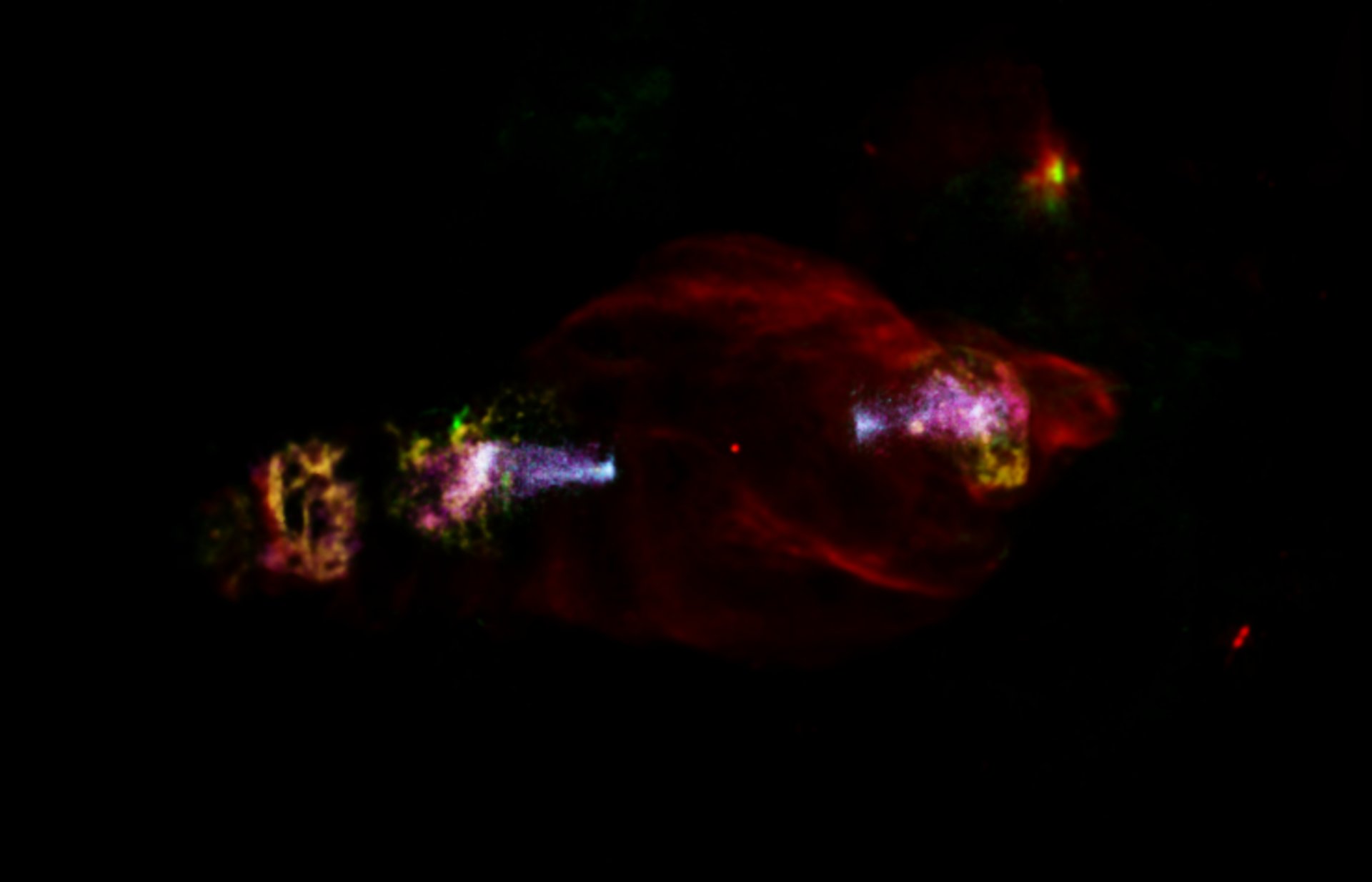ESA's X-ray space observatory snaps this beautiful cosmic creature

The European Space Agency's XMM-Newton X-ray space observatory has captured this beautiful cosmic creature, known as the Manatee Nebula, or W50, pinning down the location of unusual particle acceleration in its ‘head’.
The Manatee Nebula is thought to be a large supernova remnant created when a giant star exploded around 30 000 years ago, flinging its shells of gases out across the sky. It spans the equivalent size of four full Moons and attracted attention in 2018 when the High-Altitude Water Cherenkov Observatory revealed the presence of highly energetic particles, but couldn't pinpoint from where within the Manatee the particles were originating.
According to ESA, a black hole resides in the core of the nebula. This central microquasar (the red dot in the middle of the image), known as SS 433, ejects powerful jets of particles travelling at speeds close to a quarter the speed of light that punch through the gassy shells, creating the double-lobed shape.
"Thanks to the new XMM-Newton data, supplemented with NuSTAR and Chandra data, we believe the particles are getting accelerated to very high energies in the head of the Manatee through an unusually energetic particle acceleration process. The black hole outflow likely made its way there and has been re-energized to high-energy radiation at that location, perhaps due to shock waves in the expanding gas clouds and enhanced magnetic fields," said Samar Safi-Harb of the University of Manitoba, Canada, who led the study.
The paper titled "Hard X-ray emission from the eastern jet of SS 433 powering the W50 ‘Manatee’ nebula: Evidence for particle re-acceleration" has been accepted for publication in the Astrophysical Journal.
Follow-up studies by ESA's future X-ray observatory, Athena (Advanced Telescope for High-ENergy Astrophysics) will provide even more sensitive details about the inner workings of this curious cosmic Manatee, ESA said.
Our @ESA_XMM has X-rayed this beautiful cosmic creature known as the Manatee Nebula (W50), pinning down the location of unusual particle acceleration in its ‘head’ 👉https://t.co/29ll90X0dF #explorefarther pic.twitter.com/2RwnALtlC1
— ESA Science (@esascience) July 4, 2022










